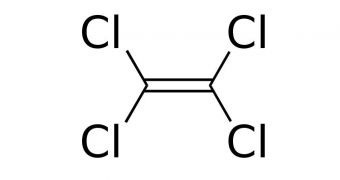Investigators at the Boston University School of Public Health (BUSPH) determined in a new study that a chemical solvent commonly used in our drinking water can lead to long-term visual impairment.
The correlation holds especially true for individuals who were exposed to the substance before birth, or in their first years of life. According to the team, color discrimination is the worst-affected visual skill in these scenarios.
This investigation represents the result of a collaboration between biostatisticians and epidemiologists at the university. They carried out the research together with an ophthalmologist at the Boston University School of Medicine, EurekAlert reports.
After analyzing a large number of cases, researchers determined that those exposed to high levels of PCE (tetrachloroethylene) from before they were born until the age of 5 fared a lot worse when it came to color discrimination than peers who were not exposed to the chemical.
In the report they released alongside these conclusions, the team urges the scientific community to study visual impairments associated with PCE exposure in greater detail, and on more test subjects.
Details of the new investigation were published in the July 11 issue of the esteemed scientific journal Environmental Health Perspectives. The study focused on people from 8 towns in the Cape Cod region of Massachusetts, who were born between 1969 and 1983.
PCE concentrations in their drinking water were higher than normal because most of the water pipes were outfitted with a type of vinyl liner that let some of the substance escape into the water stream.
Over the past couple of decades, the use of PCE-leaking vinyl liners has been phased out entirely, and now other methods of pipe insulation are used. However, the chemical is still widely used in dry cleaning and metal degreasing solutions. It is now one of the most common water contaminant.
One of the main reasons why PCE is so dangerous – other than it being a neurotoxin – is that contamination can occur through a variety of means; through dermal exposure during baths, inhalation during showering and direct ingestion via drinking water.
BUSPH professor of epidemiology Ann Aschengrau says that exposure to the chemical has also been linked to the development of breast cancer and birth defects. She says that the new research was supported by the National Institute of Environmental Health Sciences Superfund Research Program.

 14 DAY TRIAL //
14 DAY TRIAL //